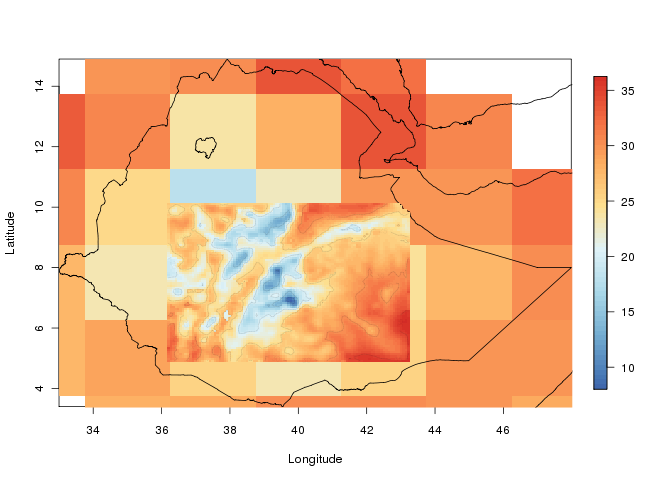Weather is important for transmission of malaria. The simplest way to measure the current weather is to walk outside and feel whether it is cold or hot, and see if it is sunny, cloudy, or rainy. Weather and climate models always start with a measurement of the current weather. Rather than relying on the perceived conditions, the weather models need accurate observations of the current weather. Such observations can be derived from satellites measuring the temperature, pressure, winds, and vapour content of the atmosphere. In addition, weather balloons can be used to correct the satellite derived observations. Once the current weather has been measured, these observations can be used as initial conditions in climate and weather models, and weather can be foretasted up to ten days ahead. With additional information about the temperature, density and salinity of the ocean, weather can be projected a season ahead. If you add volcanoes, variability of the sun, and greenhouse gasses, it is possible to estimate historical and future weather and climate.
Independent on which time period is of interest, these forecasts, or projections, have to be cover the entire Earth, and the forecasts involves solving millions of equations which demands computational resources. To keep the cost down, the global models are often run with a coarse resolution, dividing the Earth into squares of 250 km x 250 km. In regions where the land is flat for several thousand kilometres, and there is no ocean nearby, these coarse resolutions may be good enough to simulate the weather. Once a mountain, coastline, different land use, or soil types are present, the coarse global models represents the weather poorly. To aid this problem, one can use regional climate models (RCMs).
Regional climate models work by increasing the resolution of the global models in a smaller area, a domain, of interest. Such domain might cover southern Africa, Ethiopia, or western Africa, and resolve the terrain down to one by on km. The global climate model determines the large scale winds, temperatures, pressure, and humidity entering the smaller domain. The regional climate model can then resolve the local impact on weather from land use, orography, soil types etc., giving weather and climate information at much finer resolutions that what is feasible using a global model.
